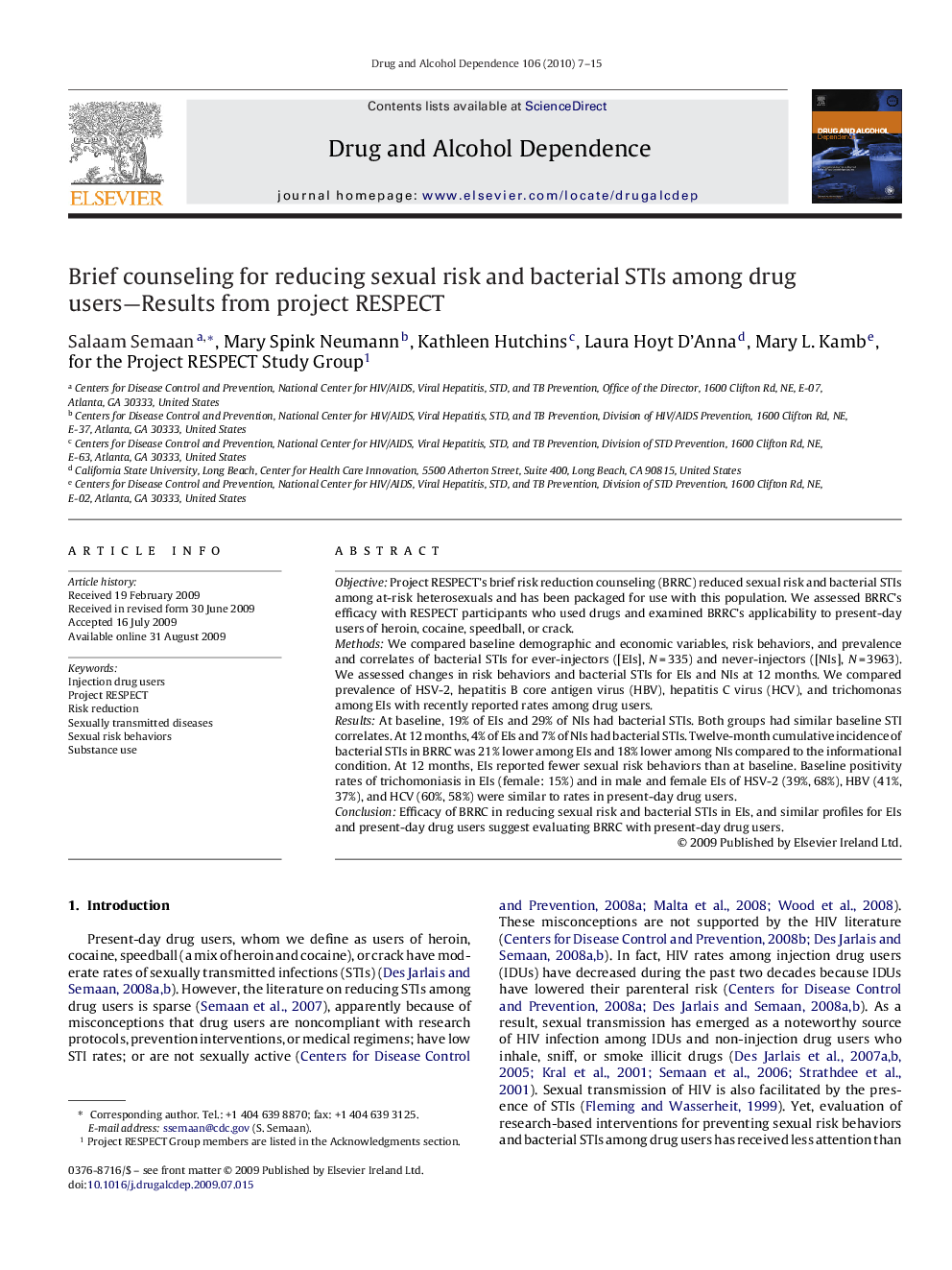| Article ID | Journal | Published Year | Pages | File Type |
|---|---|---|---|---|
| 1070531 | Drug and Alcohol Dependence | 2010 | 9 Pages |
ObjectiveProject RESPECT's brief risk reduction counseling (BRRC) reduced sexual risk and bacterial STIs among at-risk heterosexuals and has been packaged for use with this population. We assessed BRRC's efficacy with RESPECT participants who used drugs and examined BRRC's applicability to present-day users of heroin, cocaine, speedball, or crack.MethodsWe compared baseline demographic and economic variables, risk behaviors, and prevalence and correlates of bacterial STIs for ever-injectors ([EIs], N = 335) and never-injectors ([NIs], N = 3963). We assessed changes in risk behaviors and bacterial STIs for EIs and NIs at 12 months. We compared prevalence of HSV-2, hepatitis B core antigen virus (HBV), hepatitis C virus (HCV), and trichomonas among EIs with recently reported rates among drug users.ResultsAt baseline, 19% of EIs and 29% of NIs had bacterial STIs. Both groups had similar baseline STI correlates. At 12 months, 4% of EIs and 7% of NIs had bacterial STIs. Twelve-month cumulative incidence of bacterial STIs in BRRC was 21% lower among EIs and 18% lower among NIs compared to the informational condition. At 12 months, EIs reported fewer sexual risk behaviors than at baseline. Baseline positivity rates of trichomoniasis in EIs (female: 15%) and in male and female EIs of HSV-2 (39%, 68%), HBV (41%, 37%), and HCV (60%, 58%) were similar to rates in present-day drug users.ConclusionEfficacy of BRRC in reducing sexual risk and bacterial STIs in EIs, and similar profiles for EIs and present-day drug users suggest evaluating BRRC with present-day drug users.
